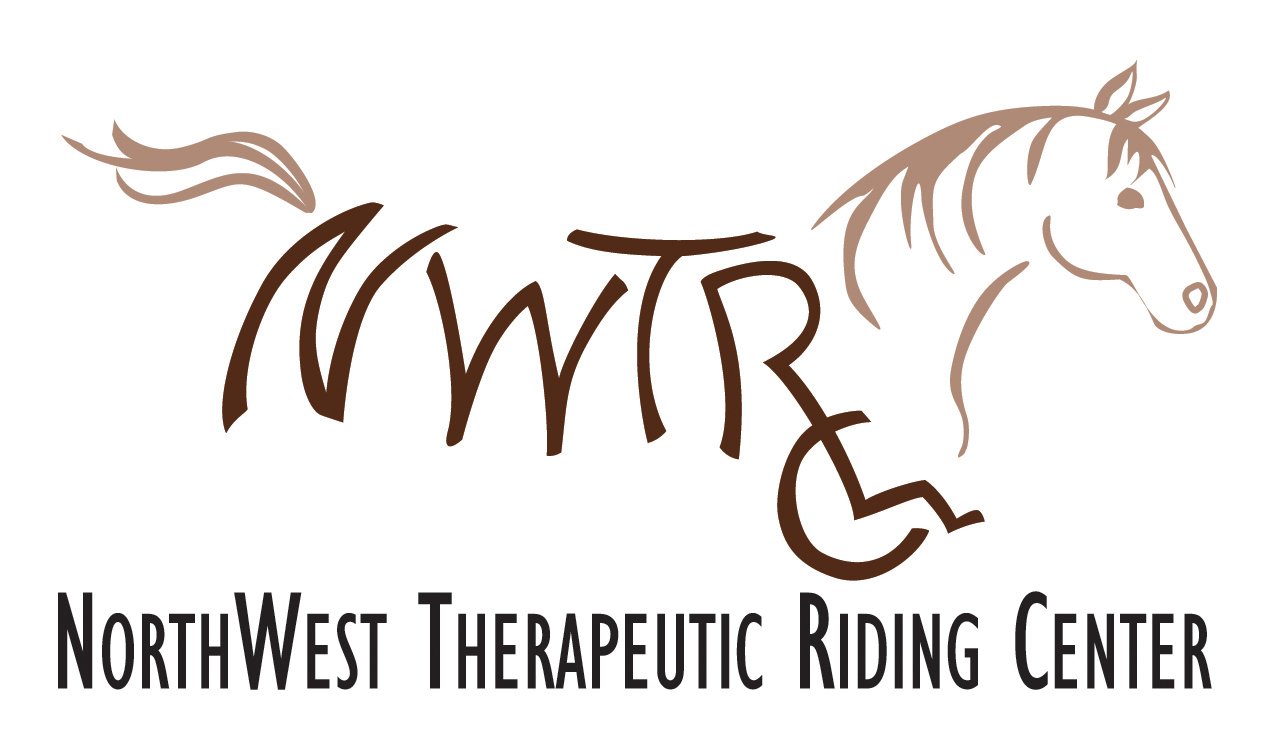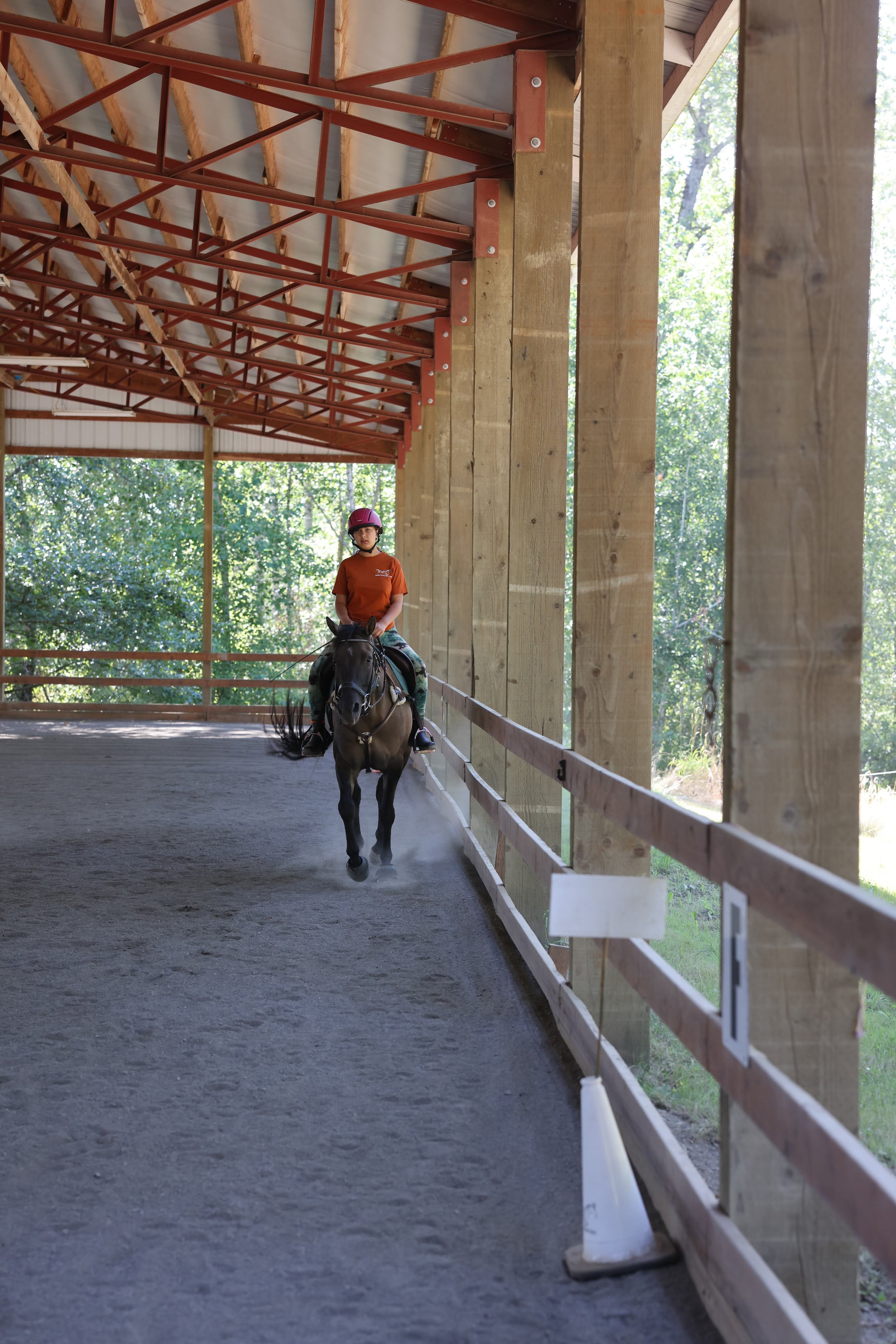
Benefits of Adaptive Horsemanship & Riding
A holistic approach.
-
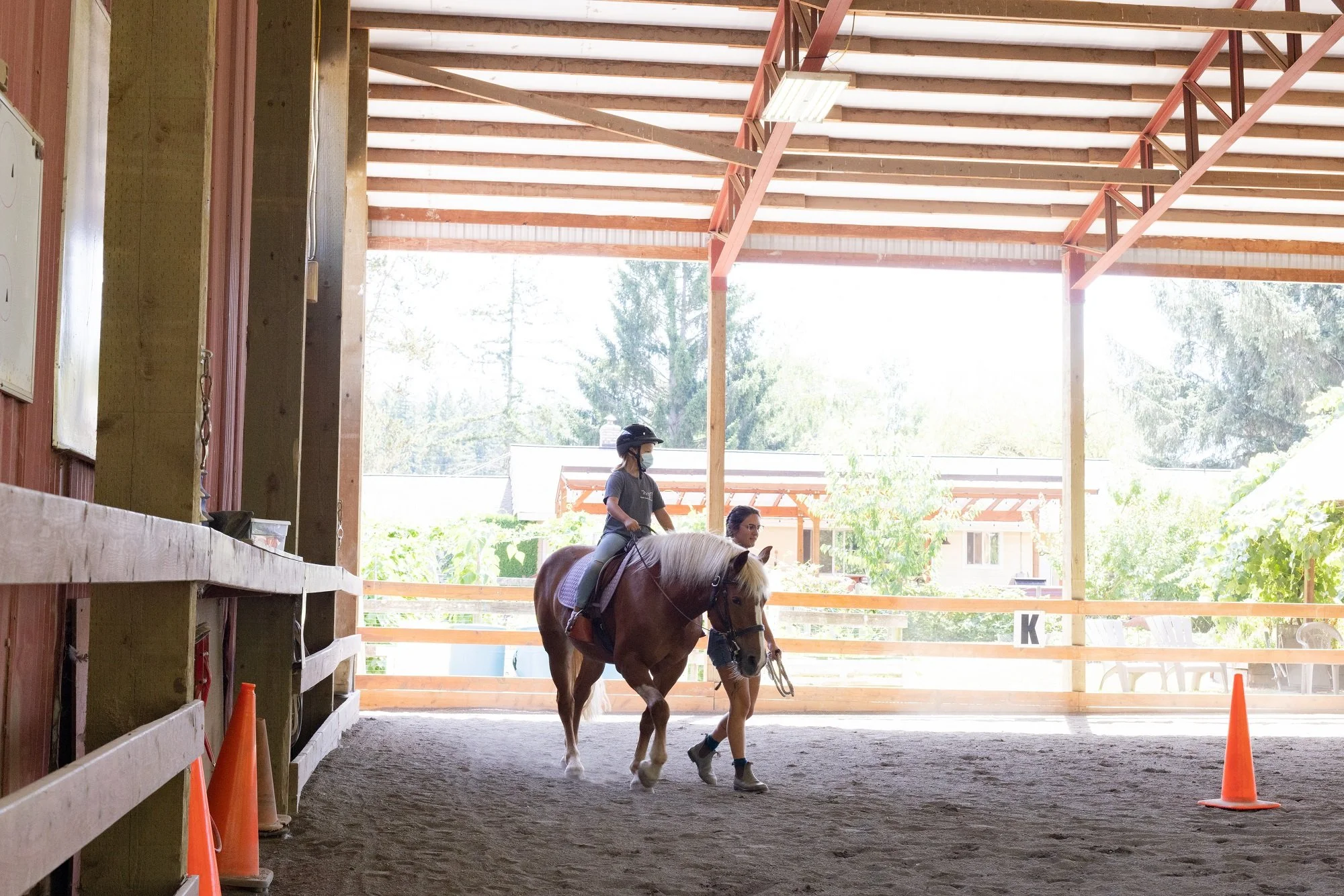
Develop horsemanship and riding skills
Horseback riding teaches responsibility to those who ride and even more so to those who take care of horses. Horse caretakers must know how to care for the horse during times of health and illness. Learning all about horse health, along with tack and farm care, involves a lot of time and responsibility in order to put that knowledge into practice every single day for the benefit of the horse. In addition, horseback riding teaches patience, discipline, understanding, empathy, compassion, self-control, and dedication.
-
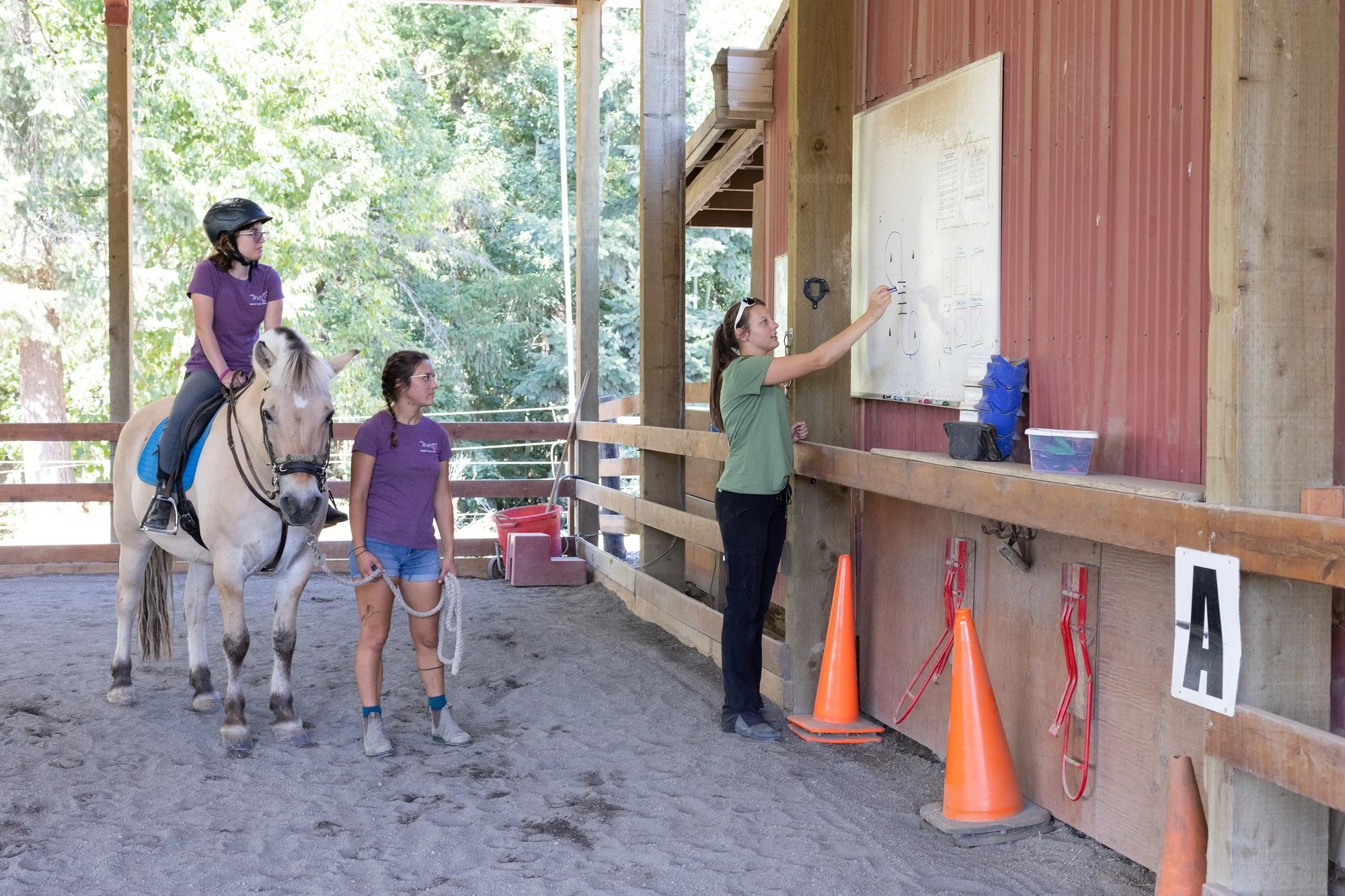
Improve communication
Participants learn to use verbal and non-verbal communication skills with their equine partners through the use of the four natural aids and understanding of equine behavior. Additionally, participants socialize with their horses, each other, their riding instructors, and volunteers at the farm.
-
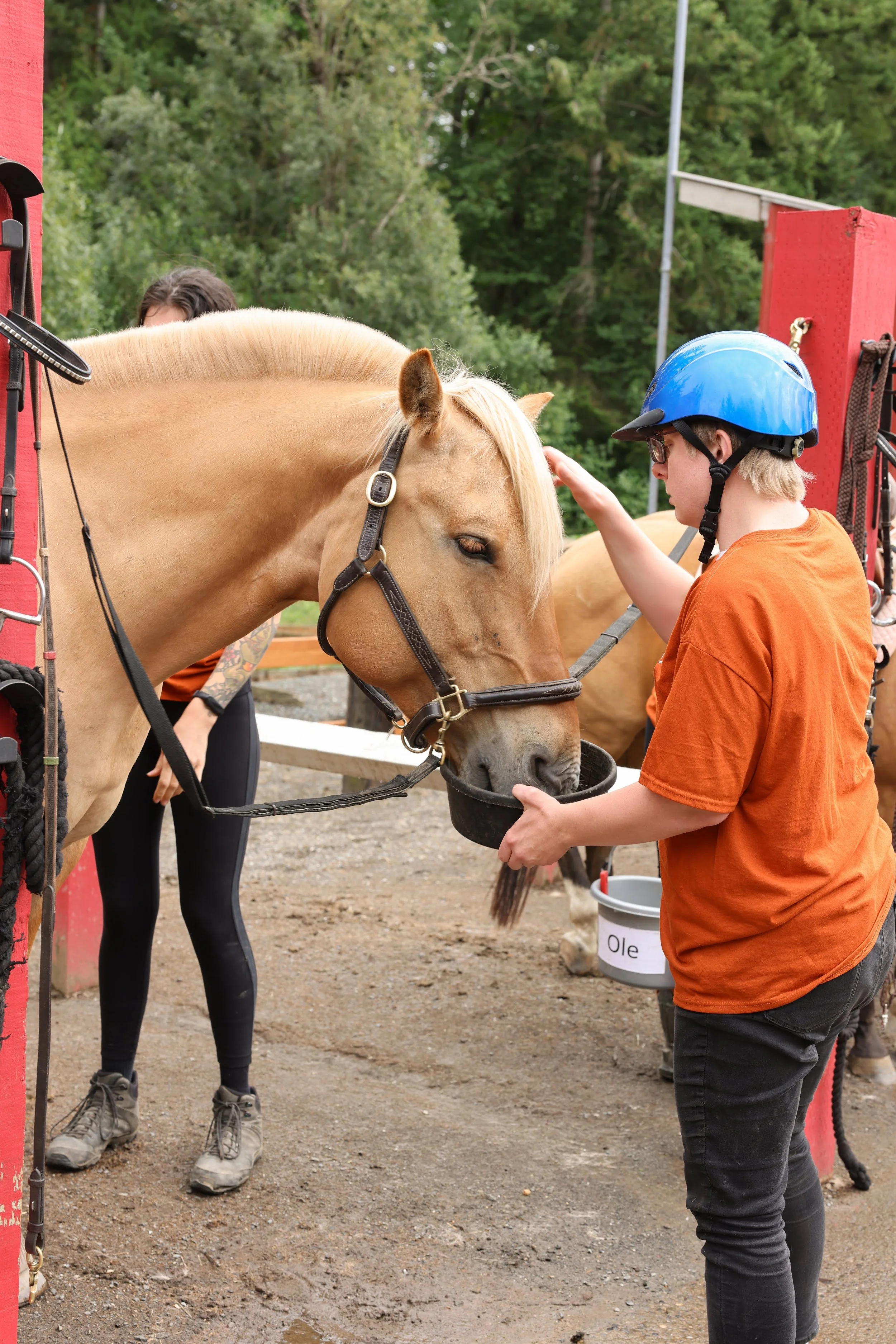
Increase independence
Through customized lesson plans each participant is given the space to act and make decisions as independently as possible. Developing independence increases self-confidence, self-esteem, reduces stress and builds self-efficacy.
-

Increase balance & coordination
Not only do you have to keep yourself balanced on the horse while riding, but you are practicing coordination as you direct the horse in different directions. The rider must coordinate their movements with the horse, developing spatial awareness and adjusting posture and position as needed. Using arms, legs, and seat simultaneously to direct the horse and navigate obstacles.
-
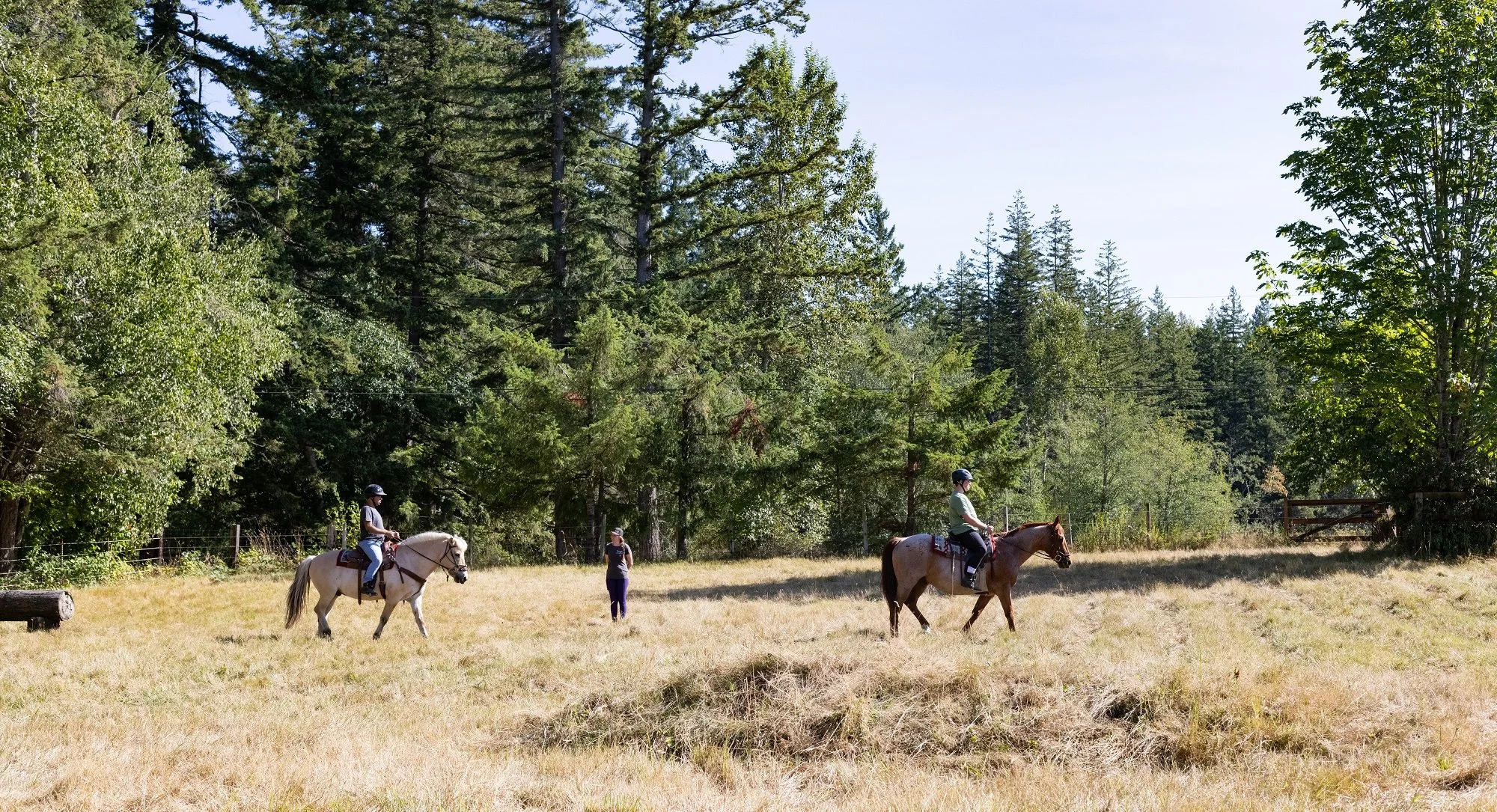
Improve focus and attention
Riders and handlers must learn to problem solve and make quick decisions while working with the horse. For instance, if a horse is set on going one way and the rider wants to go the other, they have to determine how to make a 1,000-pound animal go in the direction that they have chosen in a humane and safe way. While riding, you’re constantly making decisions, such as whether to speed up or slow down, what paths to take or avoid as well as when to take a break.
